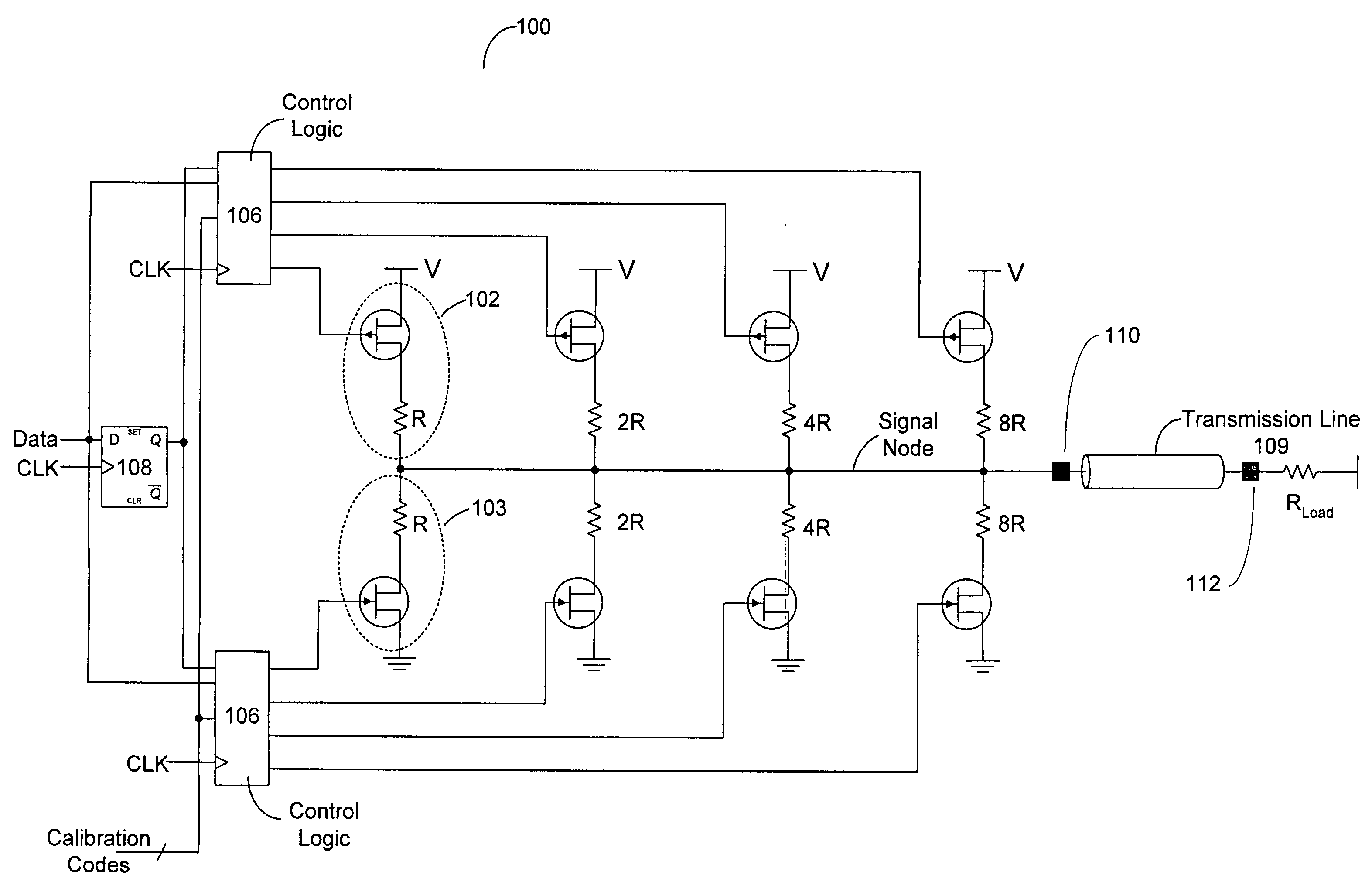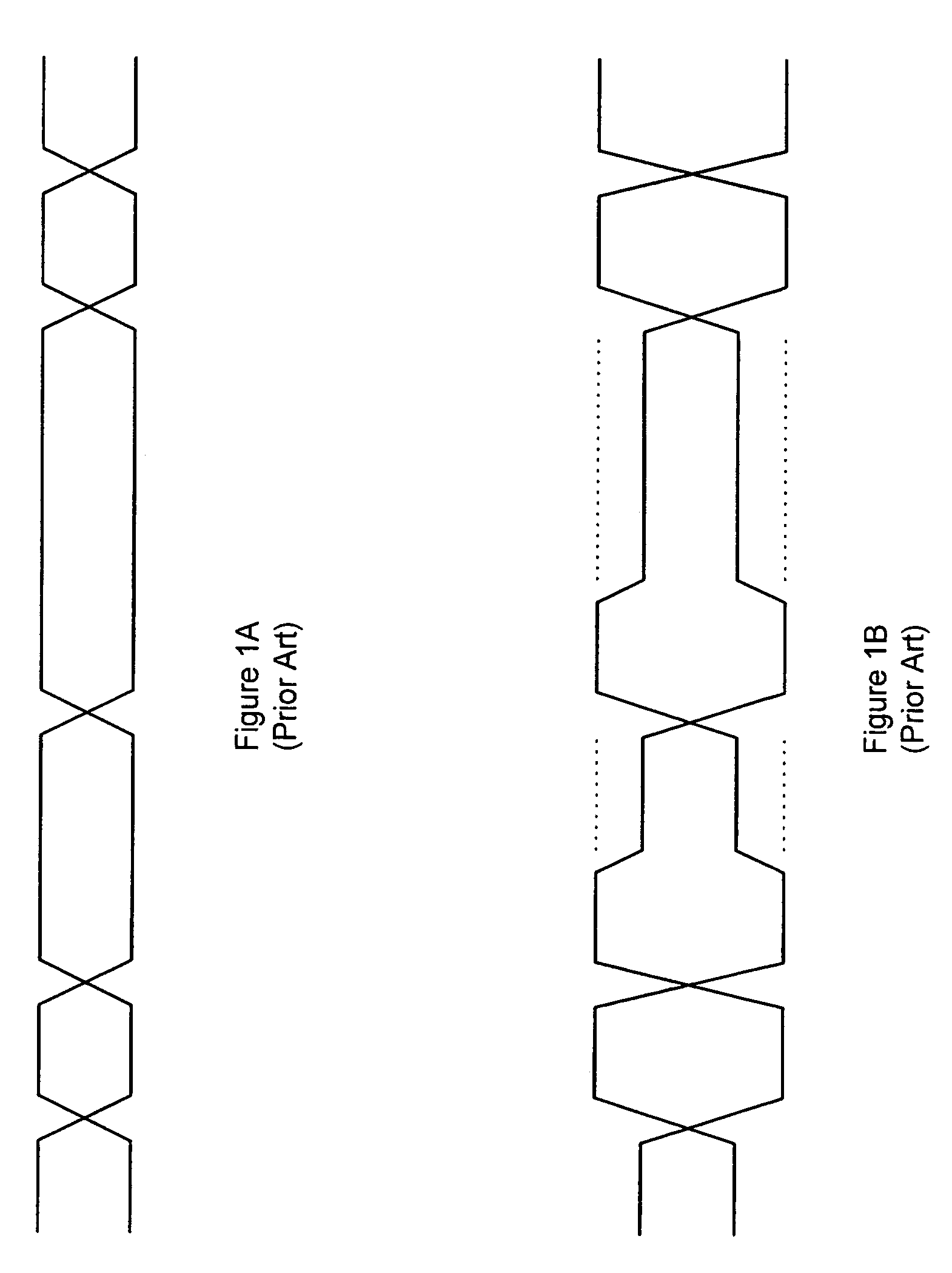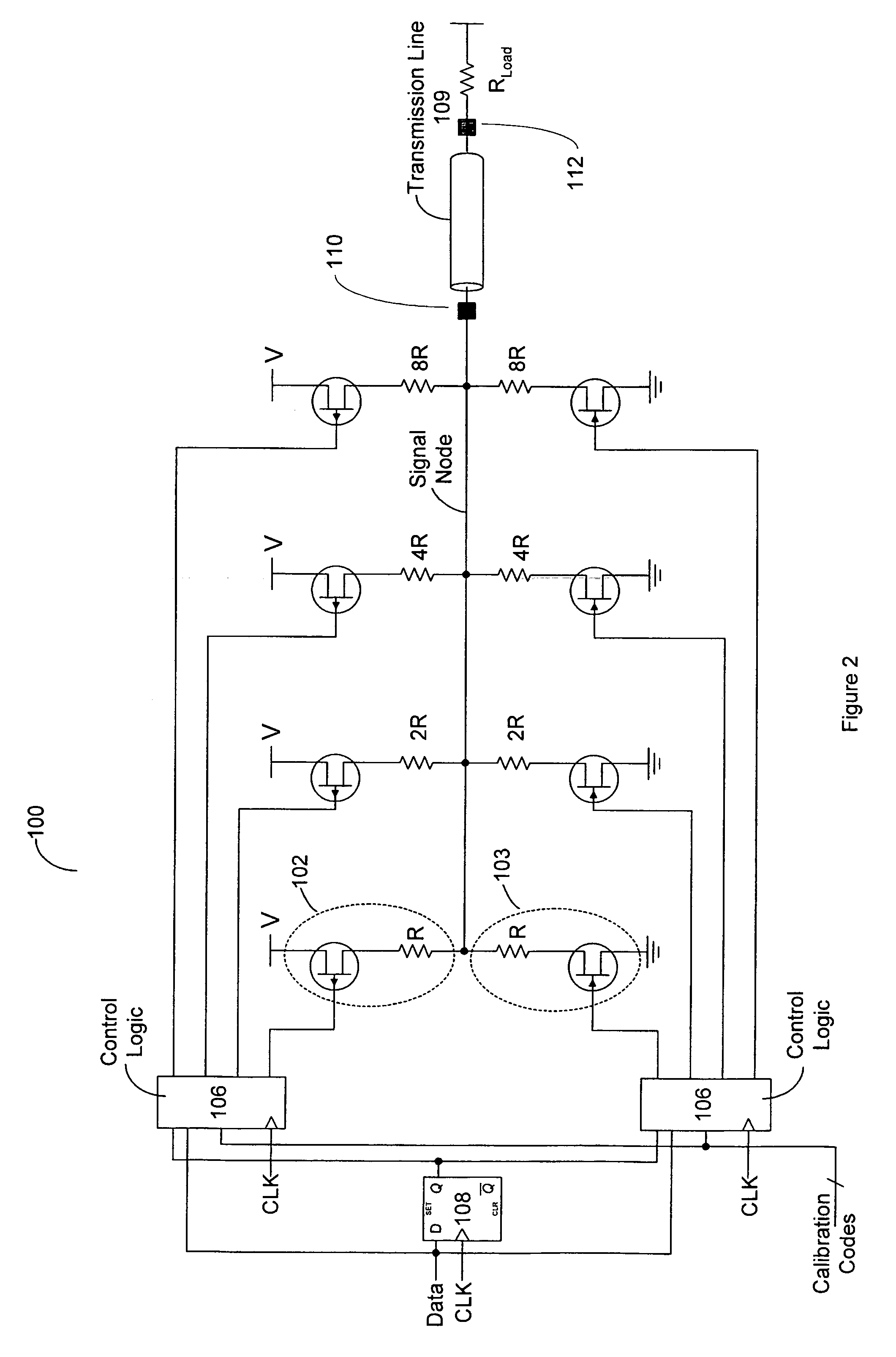Transmit based equalization using a voltage mode driver
- Summary
- Abstract
- Description
- Claims
- Application Information
AI Technical Summary
Benefits of technology
Problems solved by technology
Method used
Image
Examples
Embodiment Construction
[0024]Turning now to FIG. 2, a schematic diagram of one embodiment of a driver circuit is shown. In the embodiment shown, driver circuit 100 includes a plurality of pull-up circuits 102 and a plurality of pull-down circuits 103. Each pull-up circuit 102 includes a transistor (a field effect transistor, or FET for this embodiment) and a resistor. First and second terminals (e.g., a source and drain, respectively, in this example) of the transistor of each pull-up circuit 102 are coupled between a voltage node and a first terminal of a pull-up resistor. A second terminal of the pull-up resistor is coupled to a signal node.
[0025]Driver circuit 100 also includes a plurality of pull-down circuits. Each pull-down circuit 103 includes a transistor (also a FET in this embodiment) having a first terminal coupled to a reference node (e.g., a ground node) and a second terminal coupled to a first terminal of a pull-down resistor. A second terminal of the pull-down resistor is coupled to the sig...
PUM
 Login to View More
Login to View More Abstract
Description
Claims
Application Information
 Login to View More
Login to View More - R&D
- Intellectual Property
- Life Sciences
- Materials
- Tech Scout
- Unparalleled Data Quality
- Higher Quality Content
- 60% Fewer Hallucinations
Browse by: Latest US Patents, China's latest patents, Technical Efficacy Thesaurus, Application Domain, Technology Topic, Popular Technical Reports.
© 2025 PatSnap. All rights reserved.Legal|Privacy policy|Modern Slavery Act Transparency Statement|Sitemap|About US| Contact US: help@patsnap.com



